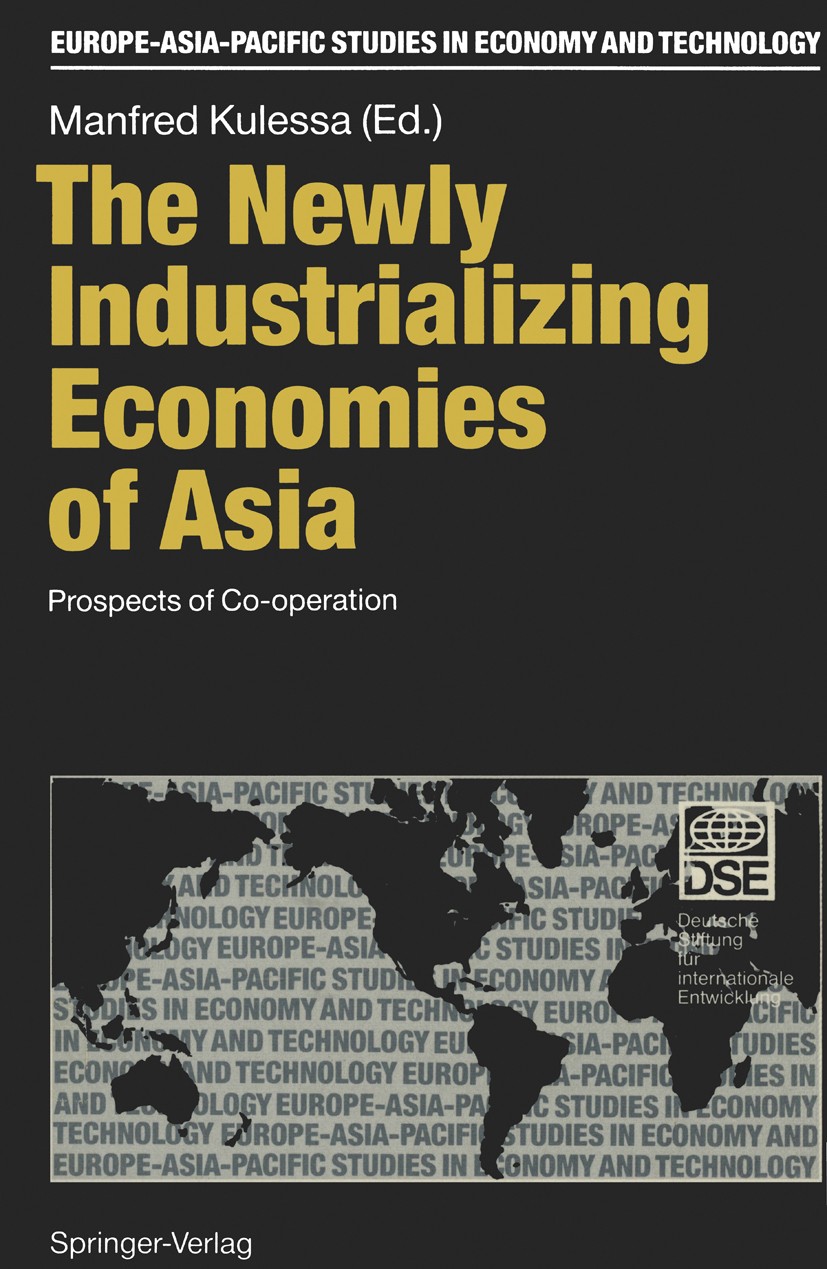| 书目名称 | The Newly Industrializing Economies of Asia | | 副标题 | Prospects of Co-oper | | 编辑 | Manfred Kulessa | | 视频video | http://file.papertrans.cn/916/915013/915013.mp4 | | 丛书名称 | Europe-Asia-Pacific Studies in Economy and Technology | | 图书封面 |  | | 描述 | Where development is concerned, our language and perhaps our way of thinking often ap pear somewhat distorted. If anything, the Asian economies with their most impressive and dynamic growth should logically be called developing countries. Instead, we call them threshold countries, newly industrializing countries (NICs) or newly industrializing eco nomies (NIEs), the latter term taking into account the Chinese argument that Hong Kong and Taiwan should not be considered countries. During the eighties, when Latin American NICs became the main victims of the debt crisis, the NIEs of East Asia (EANIEs), the little tigers or dragons, presented most impres sive examples of growth through orientation to world trade, fitting well into the Japanese ‘flying-geese‘ concept. Naturally, questions were raised as to the reasons for this success, the lessons other countries could draw from it, and the outlook for the future. At the same time, the establis hed industrial countries wanted to know what NIE competition might mean for them. In 1988, the OECD published a study entitled "The NIEs -Challenge and Opportunity for OECD Industries". The NIBs had become a fashionable object of research and | | 出版日期 | Book 1990 | | 关键词 | ASEAN; Asia; Asia-Pacific; East Asia; European Community; Europäisch-Asiatische wirtschaftliche Zusammena | | 版次 | 1 | | doi | https://doi.org/10.1007/978-3-642-75705-1 | | isbn_softcover | 978-3-642-75707-5 | | isbn_ebook | 978-3-642-75705-1Series ISSN 1431-2999 | | issn_series | 1431-2999 | | copyright | Springer-Verlag Berlin · Heidelberg 1990 |
The information of publication is updating

|
|
 |Archiver|手机版|小黑屋|
派博传思国际
( 京公网安备110108008328)
GMT+8, 2025-11-14 21:45
|Archiver|手机版|小黑屋|
派博传思国际
( 京公网安备110108008328)
GMT+8, 2025-11-14 21:45


